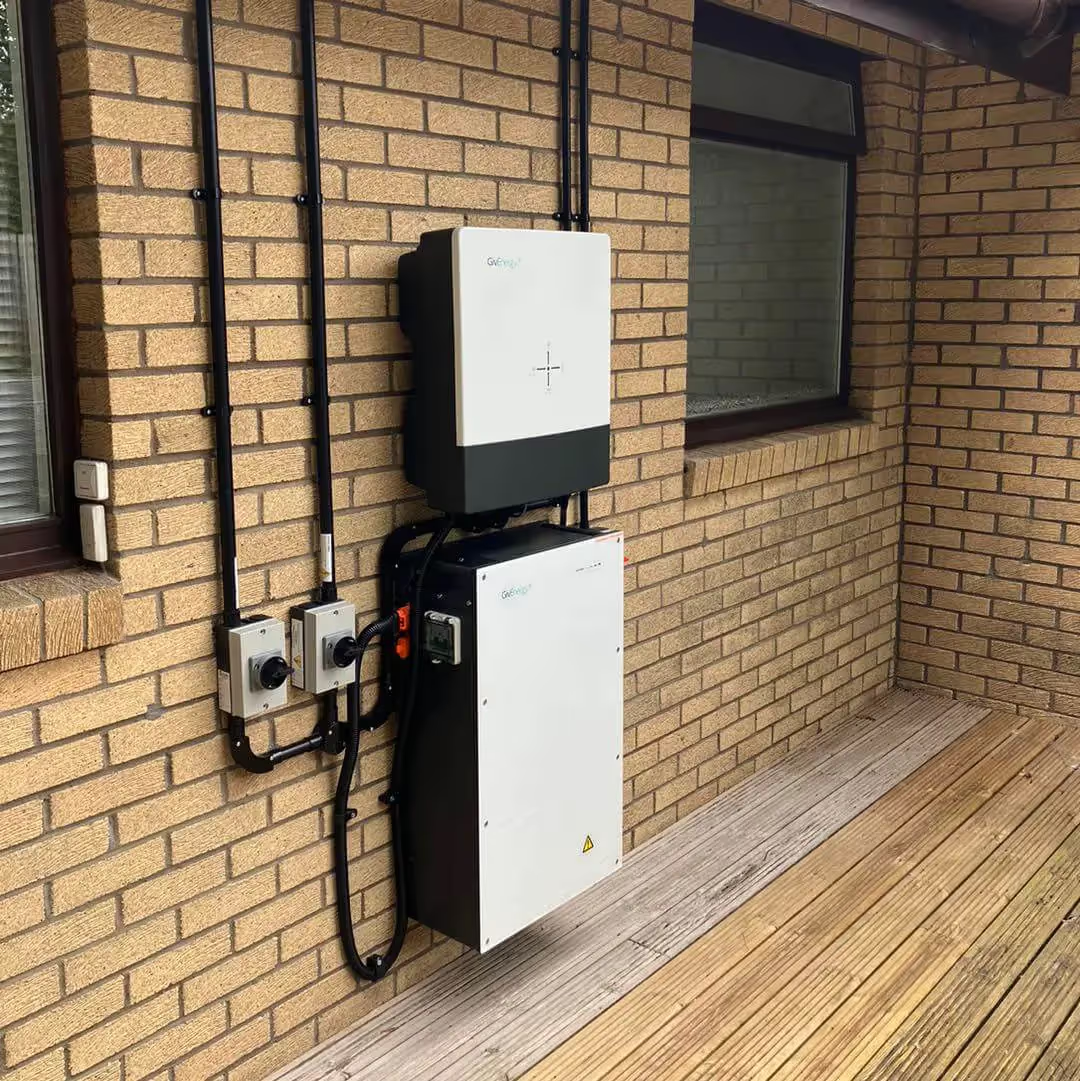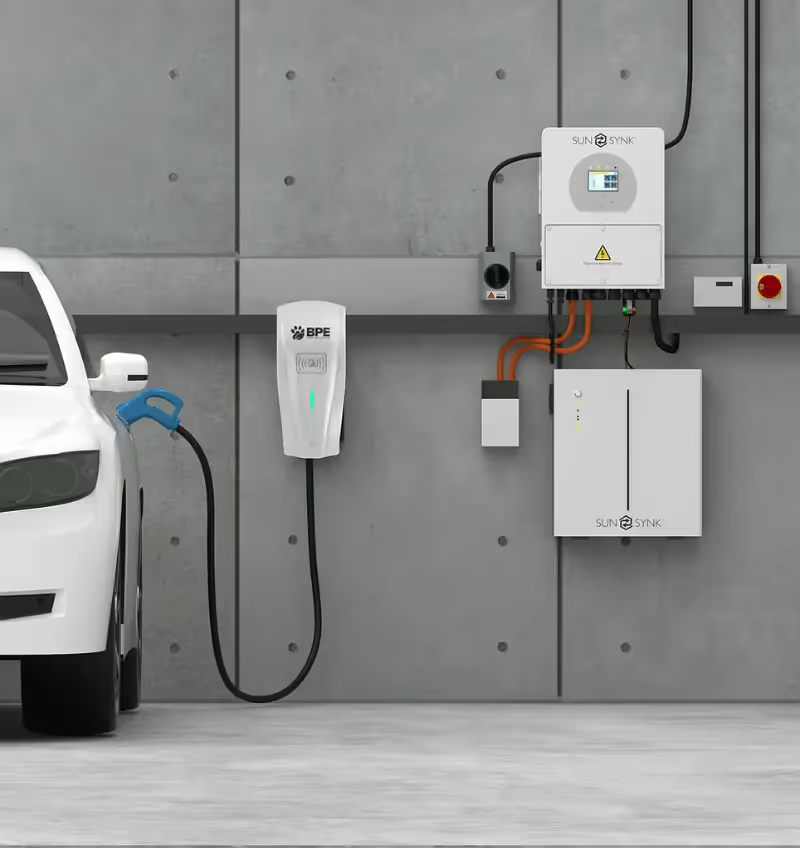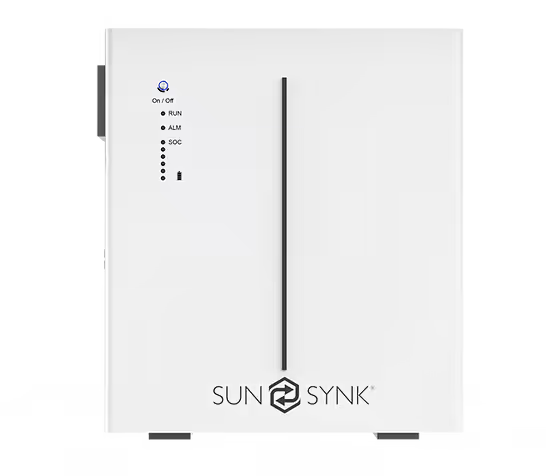
To make the best possible use of your solar panels, you should have solar storage batteries connected to your panels. Why? Because you can use solar energy whenever the sun fails to shine. And in the UK, that’s a common occurrence.
However, if your household energy requirements are particularly high, or the sun doesn’t shine for an extended period, your battery storage may need some support! That’s why state-of-the-art household solar panel battery storage options come with the ability to charge them directly from the grid.
We’ll take a close look at the advantages and drawbacks of solar panel storage batteries later in this post. For now, however, let’s address some of the key issues about charging a solar battery from the grid.
Let’s get right to the point! Yes! Grid-charging solar batteries is possible with the right equipment. The latest batteries make the process exceptionally easy – allowing you to stock up on cheap electricity at night for use when kWh prices are higher during the day.
If you want to learn more about how to charge a battery from grid power, contact us today to discuss your home energy needs in detail.

As we explain in this article, the average UK home needs a 5kWh solar panel battery. This is the optimum capacity for ensuring an efficient system that minimises your home’s reliance on grid power.
According to Ofgem, the average three-bedroom property with three or four inhabitants uses 2,700kWh per annum. A 3.5kW solar panel system is perfect for this scenario, even though you might think it’s excessive. That’s because the average efficiency rate (the conversion efficiency of sunlight into electricity) of solar panels is just 20%, and they only generate energy during the day.
The addition of a 5kWh solar panel battery in this instance ensures none of the electricity your panels generate during the day goes to waste. Of course, it’s always best to discuss your solar panels and battery storage with experienced professionals, who will point you in the right direction.
So, if it’s nighttime or the sun is nowhere to be seen, how do you store sufficient energy to keep your home and appliances running at peak times of the day? The simple answer involves charging solar batteries from the grid when electricity is cheap.
And if you have an EV tariff that gives you access to several hours of low-price energy, charging solar storage batteries at night makes sound economic sense.
Imagine you’re running an energy-efficient home that has a heat pump and several rooms to heat. The chances are that your power needs are going to be pretty high. A 5kWh solar battery can usually be charged at off-peak prices offered by EV tariffs. And while it may not be able to discharge at the rate required by a heat pump, it will definitely contribute.
By heating your home – albeit partially – with the cheaper electricity you stored during an EV tariff’s off-peak period, you can drastically reduce the overall cost of keeping your home warm and cut your household carbon emissions.
So, when your electricity is at its cheapest and your battery storage for solar panels needs a little help, simply charge the battery with grid power. The energy you store will help to power your home at times of the day when electricity costs are at their highest.

You may now be thinking: “How can I charge my solar panel battery storage using grid power during the night when I’m supposed to be charging my electric vehicle?” It’s usually very easy, which means you can squeeze even more from your overnight EV tariff.
You should be able to get 22kWh of power into your home from the grid. To charge the latest solar power storage batteries, you’ll need around 4 to 5kWh. And for your EV, you’ll need around 7kWh. So, even if you charge both at the same time, you should still have spare capacity of about 10kWh – more than enough to cover all your other needs during the night.

So, you already have solar panels and you wish to add solar battery storage retrospectively? That’s not a problem. In fact, it’s quite a common occurrence.
Of course, solar battery storage experts will need to assess your current system to ensure the chosen battery option is compatible. If there’s a compatibility issue, certified professionals may be able to upgrade your solar inverter to a hybrid version. It may also be possible to install an AC-coupled battery. You can learn more about solar panel inverters here.
If your existing solar panel system is struggling to power your home at certain times of the day, or you want to make your system even more efficient, adding batteries for solar power storage makes perfect sense when you consider the potential savings over the equipment’s lifetime.
The easiest and most cost-effective way to take advantage of the savings possible with battery storage is to have it installed with your solar panels. However, a lot of householders are creating solar energy with no way of storing it.
When you also consider that they’re missing out on the opportunity to charge their battery storage when electricity tariffs are at their lowest, millions of pounds are being needlessly wasted in the UK each week.
But there’s good news. In most cases, it’s easy for professionals to integrate battery storage into existing solar panel systems. The most important decision to make is choosing an appropriately sized battery for your home.
Take a look at your energy bill or smart meter to get a rough idea of your household’s monthly electricity usage. For a rough daily usage, divide that number by 30.
So, if you use 5kWh on average each day (enough to cover a two-bedroom family home), you’ll probably need a 5kWh battery to chage from the grid. This will ensure the battery can deliver all your domestic electricity requirements over the course of any given 24-hour period.
Generally speaking, you’ll need the following battery size equations to ensure you always have enough stored solar power to run your home. You want to get the balance right, so that you are utilising as much solar as possible, while not have a large battery sitting idle during the summer months
When things don’t go as planned during the day, you may not have enough stored power to run your home on battery power alone. This is why the ability to charge a solar battery by plugging it into grid power is so important. You can also choose to discharge the battery, and use the stored energy, when energy rates might be at a premium as times such as the evening (depending on the tariff you are on).
By giving your solar panel system a helping hand with cheap EV tariff electricity that’s available overnight, you can keep your energy costs to a minimum.

While batteries for solar panel storage cost an average of £4,000 – depending on the size of the home and its energy needs –this upfront cost can deliver up to 10 years of energy savings. This cost would include the inverter (which can be deducted if you have existing solar panels with a hybrid inverter), labour and the cost of the battery itself.
In the long run, your investment will pay for itself in the form of lower energy bills. What’s more, you won’t need to payfor maintenance, as once your solar panels battery storage is installed, it's very unlikely to need regular maintenance.
When it’s time for the annual servicing of your solar panel system, ask the engineers to check your battery storage forissues – particularly if you’re also charging the battery via the mains when you need to top up your stored solar power.
The use of battery storage solutions with solar panels is helping householders across the UK slash the carbon footprint of their homes and drastically reduce their annual energy costs. And while there’s an obvious net benefit, some people have raised concerns about the extraction processes required to obtain the lithium, cobalt, and nickel needed to make solar storage batteries.
Ethical solar battery installers such as Dwellow take steps to ensure old batteries are either recycled or disposed of safely and ethically. What’s more, the latest technologies rely on more eco-friendly materials, helping installers and manufacturers alike to minimise their impact on the environment.
Investing in solar battery storage is an investment in the environment, the fight against climate change, and the procurement of cheap and reliable energy for years to come. That said, the cost of installation is considerable, so it’s always a good idea to weigh up the pros and cons involved.
The cost of energy has spiralled like never before since the Covid-19 pandemic. Wars, terrorism, and highly volatile fossil fuel markets have all played a role in spiking energy prices around the world.
The soaring cost of gas in the UK has had a direct impact on the price of electricity – trebling, in some cases, annual bills for millions of householders across the country.
By adding solar power with battery storage to your home, you can free yourself from the notoriously unpredictable electricity market. That’s because you can store the energy your solar panels capture during the day and use it at night.
The perfect combination of solar panels and battery storage may mean you can say goodbye to grid energy bills for several months of the year.
If you have an efficient solar panel and battery storage system installed in your home, there will be periods when you create more energy than you need. And when this happens, you can sell electricity back to the grid.
The Smart Export Guarantee ensures you can earn a modest income from the excess electricity you sell. Tha said, it will never be more than you pay for it, so the best option is alwyas to use as much of the free solar from your roof as possible.
Once professional solar power engineers have installed your battery storage for solar power, you can pretty much let it do its thing! There’s no need for planned, scheduled maintenance – making it a highly cost-effective investment.
In most cases, a simple visual check of your batteries for solar power storage will suffice – and that can be done during your solar panel system’s annual servicing.
The biggest drawback of solar energy is its consistency. You can’t capture solar energy during the night, and poor weather or a less-than-optimal aspect can seriously affect the efficiency of solar power generation. Even if you have solar power battery storage, maximising it to ensure you’re fully self-reliant is, at times, impossible.
When you have a solar energy battery you can charge directly from the mains with grid electricity, however, you can top up when your electricity tariff is at its cheapest. And that’s usually during the night with an EV tariff.
Charge your battery when electricity is cheap, and use the stored energy when grid electricity is at its highest. This is a simple recipe for reduced energy bills!
The latest solar power batteries are highly efficient, which means it doesn’t take an awful lot of kWh to charge them. If you have an EV tariff at night that offers exceptionally cheap kWh rates, you can charge your vehicle and your battery at the same time without adversely affecting your home’s other energy needs.
Using solar energy to power your air-source heat pump can make heating your hot water in summer extremely efficient and a battery can help bring down the bills in the seasons that need heating.
By using solar battery storage you can plug into the grid for charging when necessary, you’ll either be using free solar energy or exceptionally cheap EV tariff energy to heat your home. And having some energy at a third of the price (eg. Octopus Go) will clearly save you a lot of money over the course of a year.
If you want to explore the possibility of combining solar power with the UK’s cheapest home heating option, get a free quote for heat pump supply and fitting here.
While there are two clear drawbacks to using solar energy battery storage, they’re easy to mitigate.
Yes, you might need to part with up to £10k to install solar battery storage in your home – although the average bill is closer to £5k. While you can often fund this through finance, it stillrepresents a significant investment.
However, it’s important to think of the bigger picture. Your battery for solar power storage will help you use solar power in your home throughout the night. Not only that, but if you have a battery thatcan be plugged into the grid, you’ll be able to store energy when it's cheap and use it when tariff costs are high.
That £5k to £10k you invested in solar battery storage a decade ago will feel like a bargain when you add up all the money it has saved you over the years!
The average solar panel system delivers around25 years of faithful service, but the typical solar battery only lasts for 10years. You should factor in the cost of a replacement battery when you judge the price of solar panel installation. That said, the £5k solar battery replacement cost is dwarfed by the potential savings it can deliver.
When you have a solar battery you can charge from the mains, you can maximise your energy savings when the sun doesn’t shine. That’s because it allows you to store electricity when it’s at itscheapest and use it during peak hours.
Slash your domestic energy costs and reduce your carbon footprint even further by adding a solar battery to your solar panels. Get your free, no-obligation quote for solar battery installation in minutes, and reap the benefits of around-the-clock cheap energy storage.
Try our free quote tool. You'll have your personalised quote in under a minute.